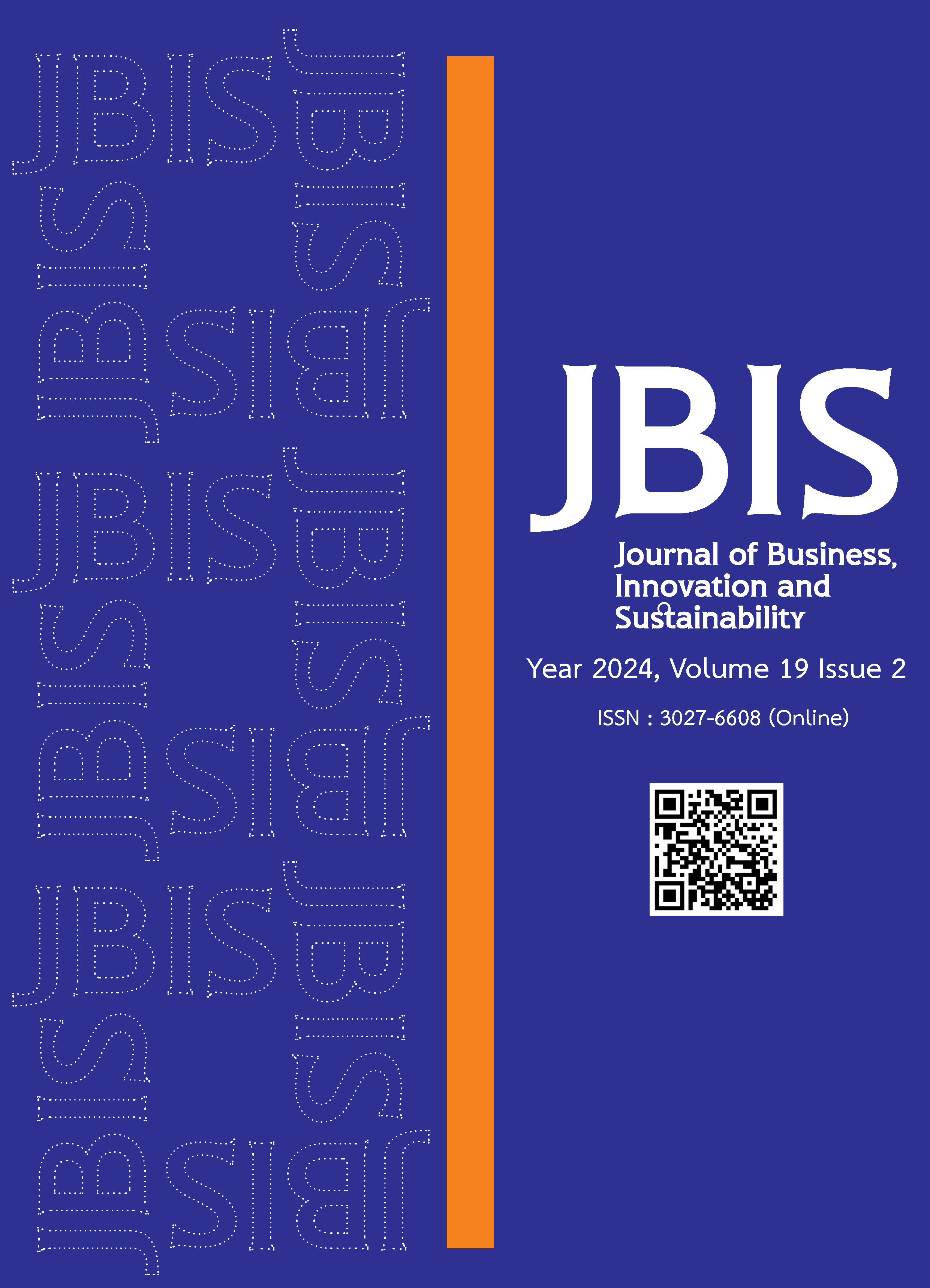Investment Strategies in Covid-19 Pandemic: Comparative Analysis of Stock Investment Performance in the SETTHSI Index and the SET100 Index Utilizing Dollar Cost Averaging (DCA), Lump Sum (LS), and Value Averaging (VA) Strategies
Main Article Content
บทคัดย่อ
This study aims to compare the effectiveness of three strategies—DCA, LS, and VA—within the SETTHSI and SET100 indices for the period spanning 2020 to 2022. The evaluation will be conducted with a one-year investment horizon, utilizing both the Investment Rate of Return (IRR) and Sharpe ratio to assess returns, and standard deviation to gauge risk. The simulation approach involves evaluating portfolio performance, which includes stocks from both SETTHSI and SET100, using these three strategies over a 12 month time frame for three consecutive years. This results in a comprehensive analysis of 6 portfolios. The findings reveal that during 2020-2022, investing in SET100 stocks, which are characterized by their large size, outperformed SETTHSI, which focuses on sustainable stocks. Furthermore, the study demonstrates that utilizing the VA strategy proves to be the most effective approach for achieving an average return when investing in stocks from both the SETTHSI and SET100 indices. While LS investments may be perceived as carrying lower risk, particularly for short-term investments. Investors may want to consider choosing the VA strategy over LS and DCA as their short-term trading strategy and investing in large-cap stock, especially if they are inclined toward crisis investment.
Article Details

อนุญาตภายใต้เงื่อนไข Creative Commons Attribution-NonCommercial-NoDerivatives 4.0 International License.
เอกสารอ้างอิง
Anantanasuwong, K. and Chaivisuttangkun, S. (2019). Do investors benefit from DCA? Evidence from the Stock Exchange of Thailand. Chulalongkorn Business Review, 41(2), 84-101.
Edleson, M. E. (1988). Value averaging: A new approach to accumulation. American Association of Individual Investors Journal, 10(7), 11-14.
Eriksson, L. and Fransson, P. (2021). Dollar-cost averaging versus lump-sum-investing: Evidence from Sweden. Master thesis, M.B.A., Uppsala University, Sweden.
Kirkby, J. L., Mitra, S. and Nguyen, D. (2020). An analysis of dollar cost averaging and market timing investment strategies. European Journal of Operational Research, 286(3), 1168- 1186.
Lu, R., Hoang, V. T. and Wong, W. K. (2021). Do lump-sum investing strategies really outperform dollar-cost averaging strategies?. Studies in Economics and Finance, 38(3), 675-691.
Markowitz, H. M. (1952). Portfolio selection. The Journal of Finance, 7, 77-91.
Marshall, P. S. (2000). A statistical comparison of value averaging vs. dollar cost averaging and random investment techniques. Journal of Financial and Strategic decisions, 13(1), 87-99.
Merlone, U. and Pilotto, D. (December 7-10, 2014). Dollar cost averaging vs lump sum: Evidence from investing simulations on real data. In Proceedings of the Winter Simulation Conference 2014 (pp. 962-973). Savannah: Institute of Electrical and Electronics Engineers.
Park, Y. K. and Lee, S. Y. (2010). Does dollar-cost-averaging strategy really outperform lump-sum strategy in the fund investment?. Asian Review of Financial Research, 23(1), 55-88.
Panyagometh, K. (2013). Performance comparison between dollar cost averaging and value averaging investment strategies and the impacts of investment horizon and target terminal wealth. Journal of Applied Finance and Banking, 3(3), 15-27.
Panyagometh, K. and Zhu, K. X. (2016). Dollar-cost averaging, asset allocation, and lump sum investing. The Journal of Wealth Management, 18(4), 75-89.
Trainor, W. J. (2005). Within-horizon exposure to loss for dollar cost averaging and lump sum investing. Financial Services Review, 14, 319-330.
Thai BMA. (2023). Treasury bill index. Retrieved April 10, 2023, from https://www.thaibma.or.th/EN/Market/Index/TBillIndex.aspx
The Stock Exchange of Thailand. (2023a). SET100 index. Retrieved April 18, 2023, from https://www.set.or.th/th/market/index/set100/profile
The Stock Exchange of Thailand. (2023b). Thailand sustainability investment (THSI). Retrieved April 18, 2023, from https://setsustainability.com/page/thsi-thailand-sustainability-investment
Wang, H., Yan, J. and Yu, J. (2012). Prospect theory and the risk-return tradeoff. Retrieved April 1, 2023, form https://ssrn.com/abstract=2120809
Williams, R. E. and Bacon, P. W. (1993). Lump sum beats dollar-cost averaging. Journal of Financial Planning, 6(2), 64-67.
Zakamouline, V. and Koekebakker, S. (2009). Portfolio performance evaluation with generalized Sharpe ratios: Beyond the mean and variance. Journal of Banking & Finance, 33(7), 1242-1254.
Zein, M. M. and Darma, G. S. (2023). The dollar cost averaging, lump sum, and value averaging strategies in mutual fund investments. Quantitative Economics and Management Studies, 4(6), 1123-1140.


